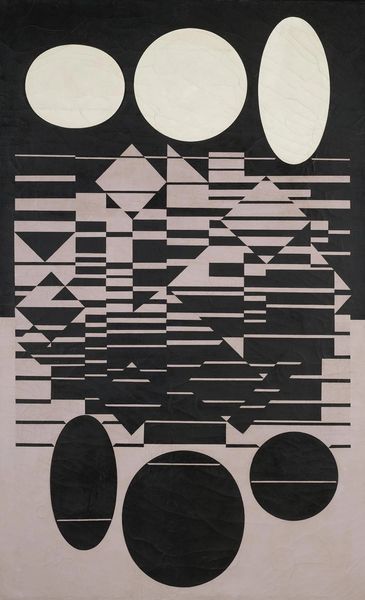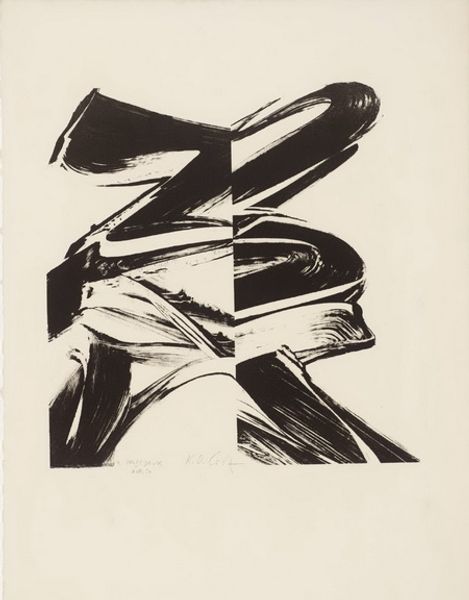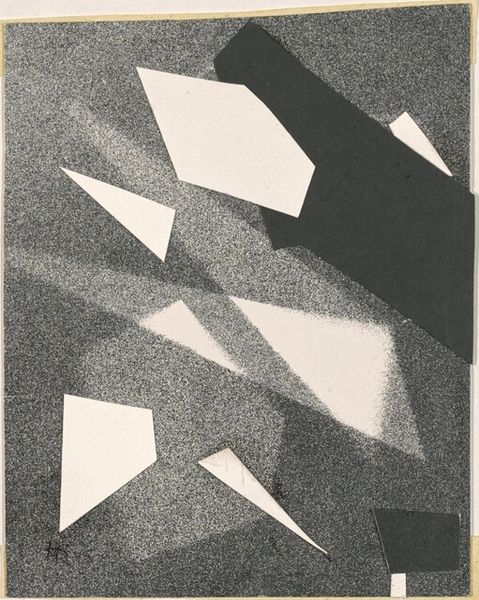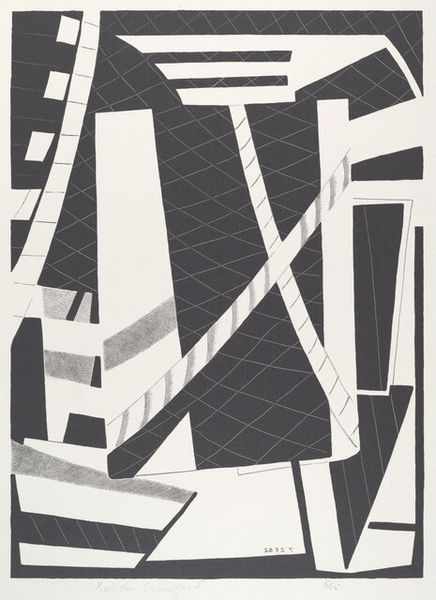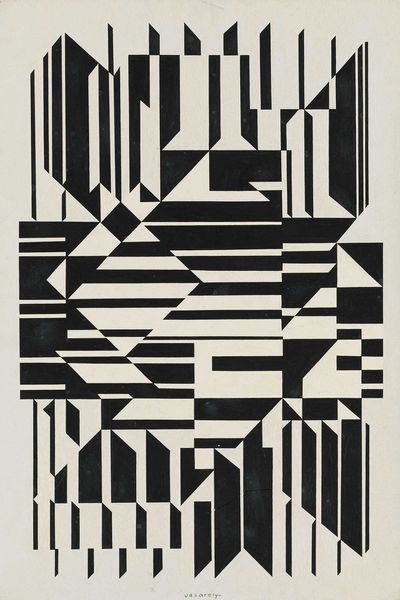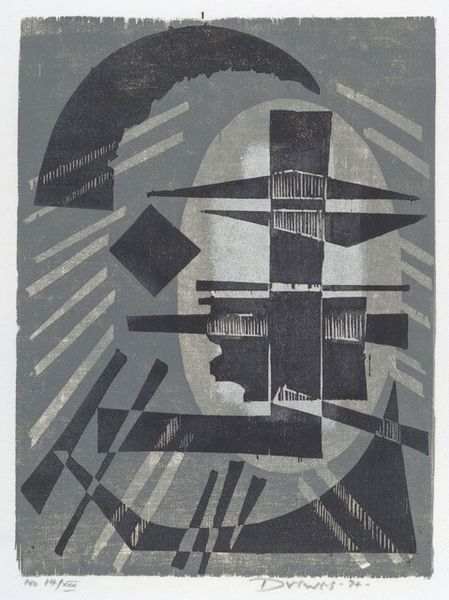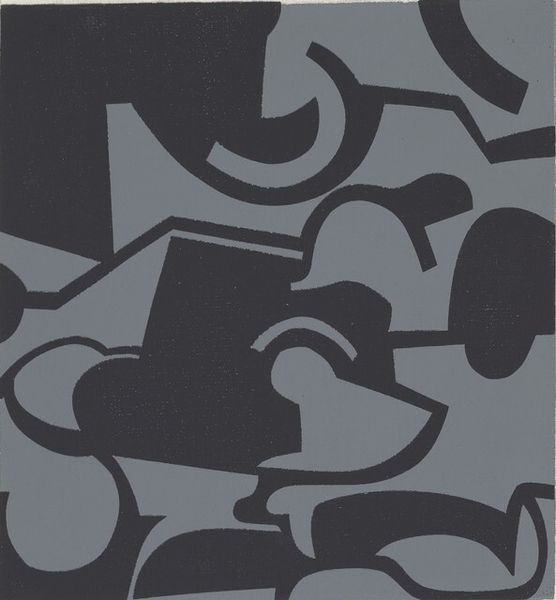
graphic-art, print
#
abstract-expressionism
#
graphic-art
#
op-art
# print
#
pop art
#
abstract
#
form
#
geometric
#
abstraction
#
line
#
monochrome
Copyright: Modern Artists: Artvee
Curator: "Zsolt" is the title of this piece, a print created by Victor Vasarely in 1955. The stark monochrome palette immediately catches the eye. Editor: It feels… suspended, doesn’t it? Like an object floating between states, neither solid nor entirely liquid, the black swallowing the white, or vice versa. The composition is dominated by an ambiguous shape against this backdrop of what appear to be carefully ruled lines. Curator: Considering Vasarely’s deep engagement with Op Art, it's worth thinking about how "Zsolt" exemplifies his focus on visual perception and illusion. He was fascinated with how simple geometric forms and lines could create the sensation of movement or depth on a flat surface. I am fascinated about the method he used to transfer his art into a print form to have mass consumption. Editor: And that focus on geometric form… in terms of reception, the abstraction avoids specific socio-political readings, creating a universal language open to broad viewership, perfectly in line with mid-century ideals of a progressive future through design. It feels utopian. Curator: Yes, it is. Looking at the material properties here—a print, presumably mass-produced—it places Vasarely's art within reach, beyond the gallery walls. The labor involved would have been less about individual artistic flourish and more about precise reproduction for dissemination. Editor: Precisely! We see the echoes of the Bauhaus and Constructivist ideals, art intersecting with design for everyday consumption, thus blurring lines within established hierarchies. Vasarely’s art was not necessarily concerned with the aura surrounding traditional forms. Instead he makes his art public for the people. Curator: Indeed. And I wonder, what role does naming conventions play within this accessibility? ‘Zsolt’, a seemingly random assignation for an abstract form; could it act as another point of engagement for wider viewership? It’s all incredibly efficient. Editor: In considering the socio-historical climate of its creation, “Zsolt” feels incredibly optimistic. Mass dissemination through print married to abstraction creates universalism, in which class barriers break to enable society through art, if but only optically. Curator: By exploring the method and social accessibility of print, and contemplating on Op art movement with our understanding of Vasarely’s work; we now see his geometric design is to be admired from both artistic perspectives, but it also has democratizing features. Editor: Thinking about Vasarely's strategic use of form and reproduction, one begins to grasp his long term social impact and that creates a future for the arts.
Comments
No comments
Be the first to comment and join the conversation on the ultimate creative platform.
